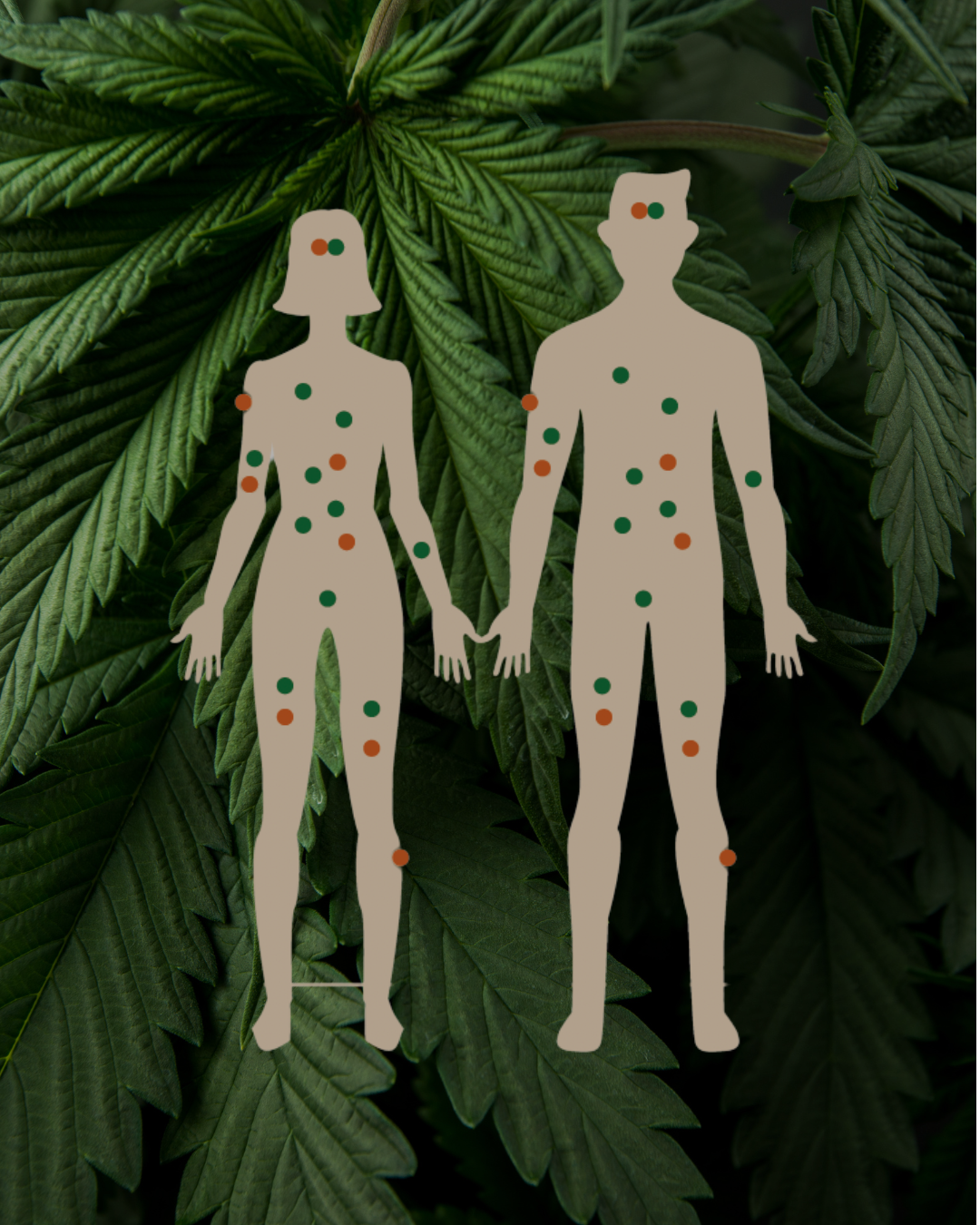How Cannabis Interacts with Our Endocannabinoid System
If you’ve ever wondered why cannabis affects everything from your mood to your appetite, the answer lies in a fascinating bodily system called the Endocannabinoid System (ECS). This built-in biological network plays a crucial role in keeping your body in balance, even if you don’t use cannabis.
So, how does cannabis interact with our Endocannabinoid System, and why does it have such a broad range of effects? Let’s break it down.
What Is the Endocannabinoid System (ECS)?
Think of the ECS as your body’s master regulator. It’s responsible for keeping things in balance (a process called homeostasis), affecting functions like:
-
- Mood & Stress Levels
- Sleep & Relaxation
- Appetite & Digestion
- Memory & Cognitive Function
- Pain & Inflammation
- Immune Response
The ECS is made up of three key components:
1. Endocannabinoids (Your Body’s Natural Cannabis)
Your body naturally produces lipid-based neurotransmitters that bind to cannabinoid receptors called endocannabinoids. The two primary endocannabinoids are anandamide, AEA and arachidonoylglycerol, 2-AG, which act like internal messengers. These compounds are structurally similar to cannabinoids found in cannabis—hence the name “endo” (meaning inside the body) and “cannabinoid.”
2. Cannabinoid Receptors (The Body’s Cannabis Locks)
Endocannabinoids bind to two main receptors found throughout the body:
- CB1 Receptors – Found mostly in the brain and central nervous system. These influence mood, memory, coordination, and pain perception.
- CB2 Receptors – Found in the immune system and peripheral organs, helping regulate inflammation and immune responses.
3. Enzymes (The Cleanup Crew)
After endocannabinoids do their job, enzymes step in to break them down, ensuring your system doesn’t stay in overdrive. The main enzymes are fatty acid amide hydrolase (FAAH), which breaks down AEA, and monoacylglycerol lipase (MAGL), which degrades 2-AG.
How Cannabis Influences the ECS
The cannabis plant contains hundreds of phytocannabinoids. The two most famous players—THC (tetrahydrocannabinol) and CBD (cannabidiol)—each affect the ECS in very different ways.
THC: The High-Inducing Impersonator
THC mimics anandamide, a natural “bliss molecule” in the ECS, and binds directly to both CB1 and CB2 receptors in the brain. Its affinity for CB1 receptors leads to the “high” associated with cannabis use. This is why THC-rich cannabis can cause feelings of euphoria, relaxation, and altered perception for some individuals—but can also trigger anxiety or paranoia in others.
It’s like giving your ECS a boost of its own feel-good chemicals. While the boost might feel good, it’s worth noting that THC overstimulates CB1 receptors, and can also affect memory and coordination.
CBD: The Gentle Modulator
CBD works differently—it doesn’t bind directly to CB1 or CB2 receptors like THC does. Instead, it influences the ECS by:
- Preventing the FAAH enzyme from breaking down anandamide too quickly (meaning more natural feel-good effects).
- Indirectly interacting with cannabinoid receptors to reduce pain, inflammation, and anxiety without causing a high.
- Supporting homeostasis by influencing other neurotransmitters like serotonin and dopamine.
This is why CBD is often used for stress relief, chronic pain, and sleep issues—without the intoxicating effects of THC.
Why Does This Matter?
Understanding how cannabis interacts with our Endocannabinoid system is more than just science. It’s the key to finding the right cannabis products for your needs.
- If you’re looking for relaxation and euphoria, THC-dominant strains may be your go-to.
- If you want relief from anxiety or pain without the high, CBD-based products might be a better fit.
- For balanced effects, hybrid strains or products with a mix of THC and CBD can provide a little of both.
The ECS explains why cannabis affects people differently—factors like genetics, tolerance, and individual ECS sensitivity all play a role.
Final Thoughts: The ECS & Your Cannabis Journey
Cannabis isn’t just another plant—it’s uniquely designed to work with your body through the Endocannabinoid System. Whether you’re using it for wellness, relaxation, or curiosity, understanding the ECS helps you make smarter choices about how and why cannabis affects you the way it does.
Want to learn even more about how cannabis interacts with your Endocannabinoid System? Enroll in our Dispensary Agent Certification program to get a deeper dive into Cannabinoids and their effect from Dr. Codi Peterson. Get started today and take your cannabis knowledge to the next level!

